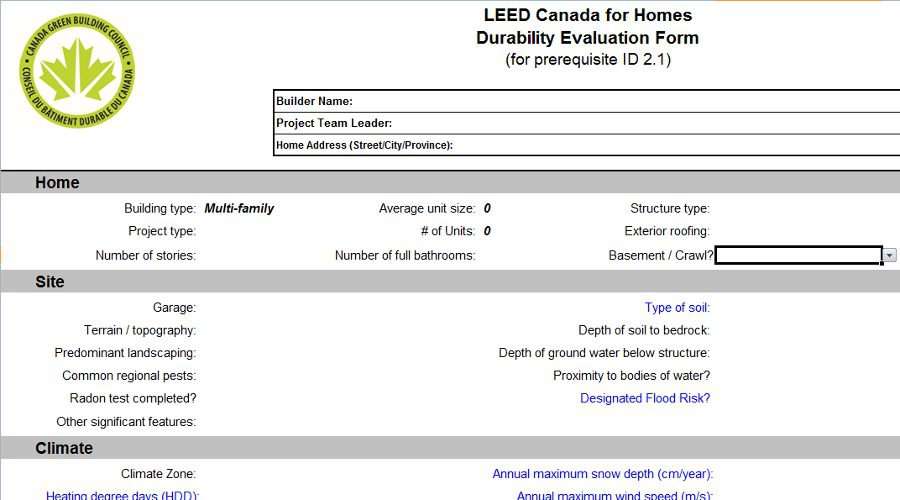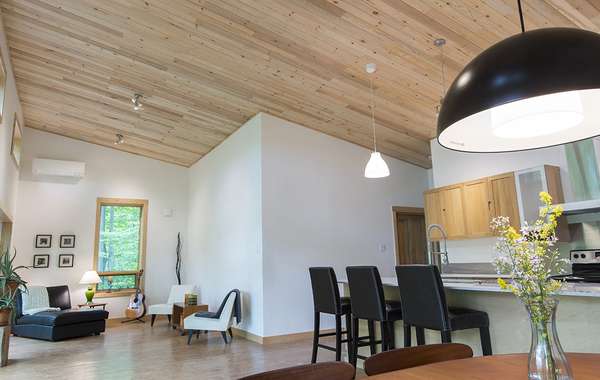Creating a durability risk evaluation and management plan means determining the specific risks and challenges your home would face - starting with the climate zone where you are building and moving on to building lot particulars.
Two neighbouring homes will face many similar issues, but may have greatly differing ones as well. This can be due to building design, sun exposure, soil conditions, material choices or even topography to name a few.
Assessing and planning for durability issues helps create a home with the greatest chance of withstanding whatever nature can throw at it.
Dowload the LEED for Homes Durability Evaluation Form. This is the same document as the checklist, all the forms you will need for a LEED project are accessible through tabs at the bottom of the spreadsheet.
Now you know about the LEED for Homes rating system. Find more pages about sustainable construction below and in the Ecohome Green Building Guide pages.
Discover all the benefits of a free Ecohome Network Membership here - promote your business and get access to discount pricing on select building materials! |








































Comments (0)
Sign Up to Comment